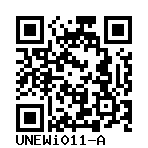UNEW011Ai
The cell line is not validated yet.
UNEWi011-A
General
Cell Line |
|
| hPSCreg name | UNEWi011-A |
| Cite as: | UNEWi011-A (RRID:CVCL_VF32) |
| Alternative name(s) |
UNEW011Ai
|
| Cell line type | Human induced pluripotent stem cell (hiPSC) |
| Similar lines | No similar lines found. |
| Last update | 10th September 2025 |
| User feedback | |
Provider |
|
| Generator | University of Newcastle (UNEW) |
External Databases |
|
| BioSamples | SAMEA2629624 |
| Cellosaurus | CVCL_VF32 |
| Wikidata | Q54991156 |
General Information |
|
| * Is the cell line readily obtainable for third parties? |
Yes |
Donor Information
General Donor Information |
|
| Sex | male |
| Age of donor (at collection) | 1-4 |
| Ethnicity | Caucasian |
Phenotype and Disease related information (Donor) |
|
| Diseases | A disease was diagnosed.
|
| Non-disease associated phenotypes |
|
| Family history | NO |
External Databases (Donor) |
|
| BioSamples | SAMEA2629494 |
Ethics
| Has informed consent been obtained from the donor of the embryo/tissue from which the pluripotent stem cells have been derived? | Yes |
| Do you (Depositor/Provider) hold the original Donor Consent Form? | Yes |
| Does consent explicitly allow the derivation of pluripotent stem cells? | No |
| * Does consent expressly prevent the derivation of pluripotent stem cells? | Yes |
| * Does consent pertain to a specific research project? | No |
| Does consent permit unforeseen future research, without further consent? | Yes |
| Does the consent permit uses of donated embryo/tissue or derived cell line intended for clinical treatment or human applications? | No |
| Does consent expressly prevent development of commercial products? | No |
| Does consent expressly prevent financial gain from any use of the donated embryo/tissue, including any product made from it? | No |
| Does consent expressly permit storage of donated embryo/tissue for an unlimited time? | No |
| Does consent prevent the DONATED BIOSAMPLE from being made available to researchers anywhere in the world? | No |
Does consent permit research by | |
| an academic institution? | Yes |
| a public organisation? | Yes |
| How may genetic information associated with the cell line be accessed? | |
| Does the consent permit the donor, upon withdrawal of consent, to stop the use of the derived cell line(s) that have already been created from donated samples? | No |
| Does the consent permit the donor, upon withdrawal of consent, to stop delivery or use of information and data about the donor? | Yes |
| For generation of the cell line, who was the supplier of any recombined DNA vectors or commercial kits used? | |
hIPSC Derivation
General |
|
| Source cell type |
A connective tissue cell which secretes an extracellular matrix rich in collagen and other macromolecules. Flattened and irregular in outline with branching processes; appear fusiform or spindle-shaped.; These cells may be vimentin-positive, fibronectin-positive, fsp1-positive, MMP-1-positive, collagen I-positive, collagen III-positive, and alpha-SMA-negative.
|
| Source cell origin |
Any portion of the organ that covers that body and consists of a layer of epidermis and a layer of dermis.
Synonyms
|
| Age of donor (at collection) | 1-4 |
Reprogramming method |
|
| Vector type | Integrating |
| Vector | Virus (Lentivirus) |
| Genes | |
| Is the used vector excisable? |
Unknown |
| Absence of reprogramming vector(s)? |
Unknown |
| Reprogramming vectors silenced? | |
Vector free reprogramming |
|
Other |
|
| Derived under xeno-free conditions |
Unknown |
| Derived under GMP? |
Unknown |
| Available as clinical grade? |
Unknown |
Culture Conditions
| Surface coating | Matrigel/Geltrex |
| Passage method |
Enzyme-free cell dissociation
EDTA
|
| O2 Concentration | 95 % |
| CO2 Concentration | 5 % |
| Medium |
mTeSR™ 1
|
Characterisation
No characterisation data could be found.Genotyping
Karyotyping (Cell Line) |
|
| Has the cell line karyotype been analysed? |
Unknown
|
Other Genotyping (Cell Line) |
|


Login to share your feedback, experiences or results with the research community.